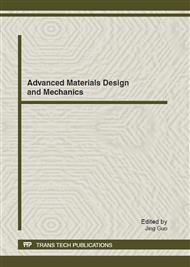p.99
p.103
p.107
p.111
p.116
p.122
p.128
p.132
p.136
Measurement of the Electric Initiating Device Temperature Using Infrared Microscopic Thermographer
Abstract:
The temperature of electric initiating device under constant current has the vital significance to the security and the firing performance of electrical explosive initiator. In this paper, the temperature of bridgewire and semiconductor bridge which were representative in electrical explosive devices (EED) was studied using the infrared microscopic thermographer. The curve of temperature with current change is obtained. The resluts indicate that the temperature increases with the current in the form of quadratic parabola and the temperature of semiconductor bridge rises slower than that of bridgewire. According to the experimental analysis, it is found the reason that the temperature of semiconductor bridge increases slower is attributed to the better heat conduction property due to the close-contact silicon between substrate and bonding pad.
Info:
Periodical:
Pages:
116-121
Citation:
Online since:
September 2012
Authors:
Price:
Сopyright:
© 2012 Trans Tech Publications Ltd. All Rights Reserved
Share:
Citation:


